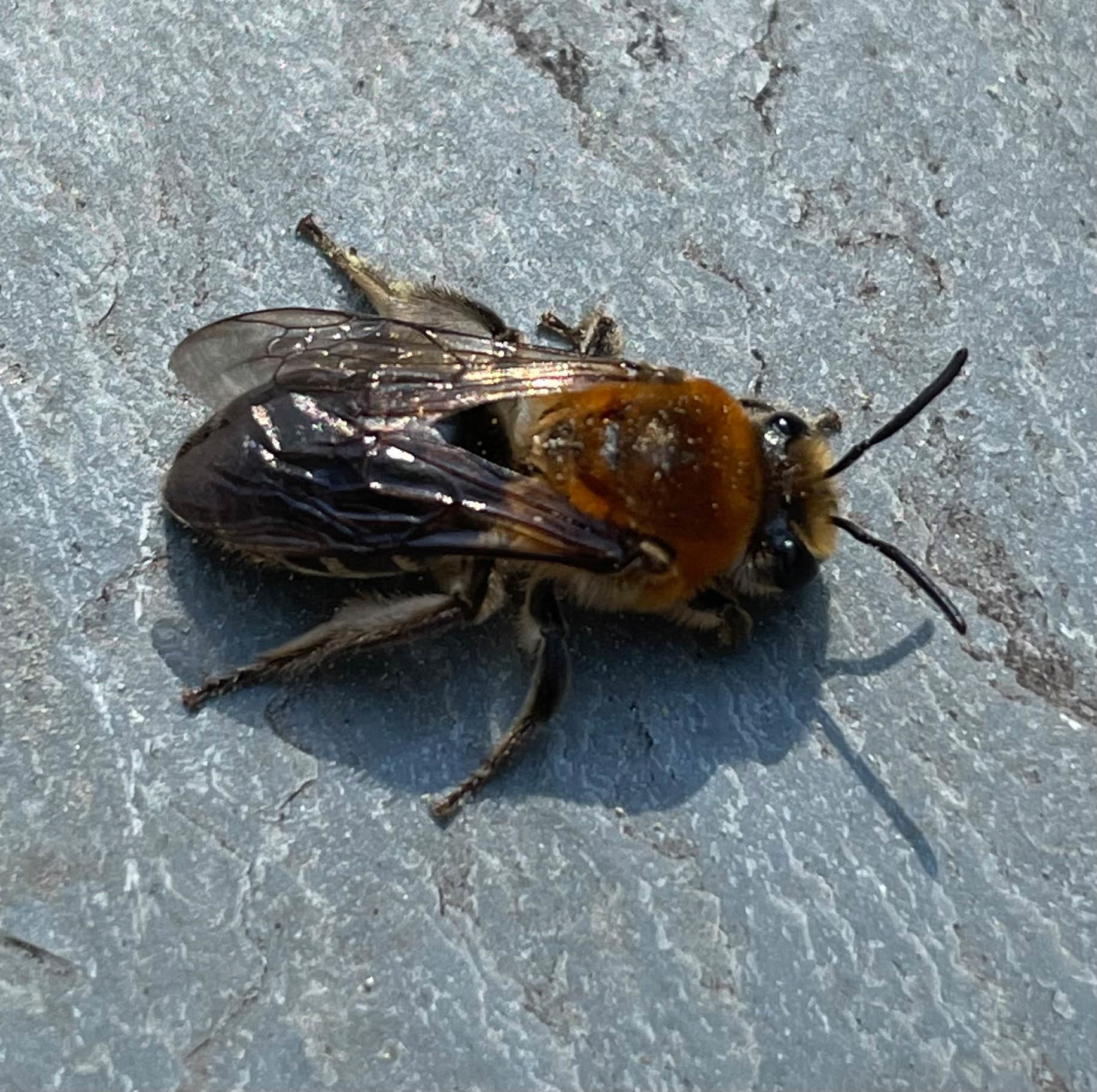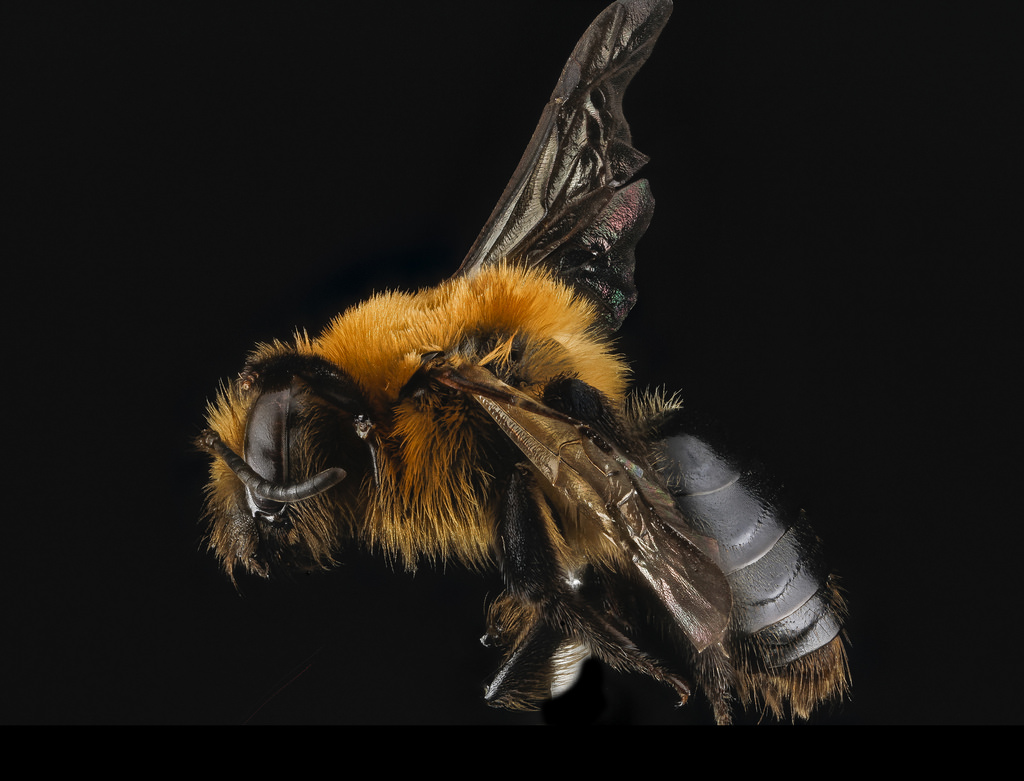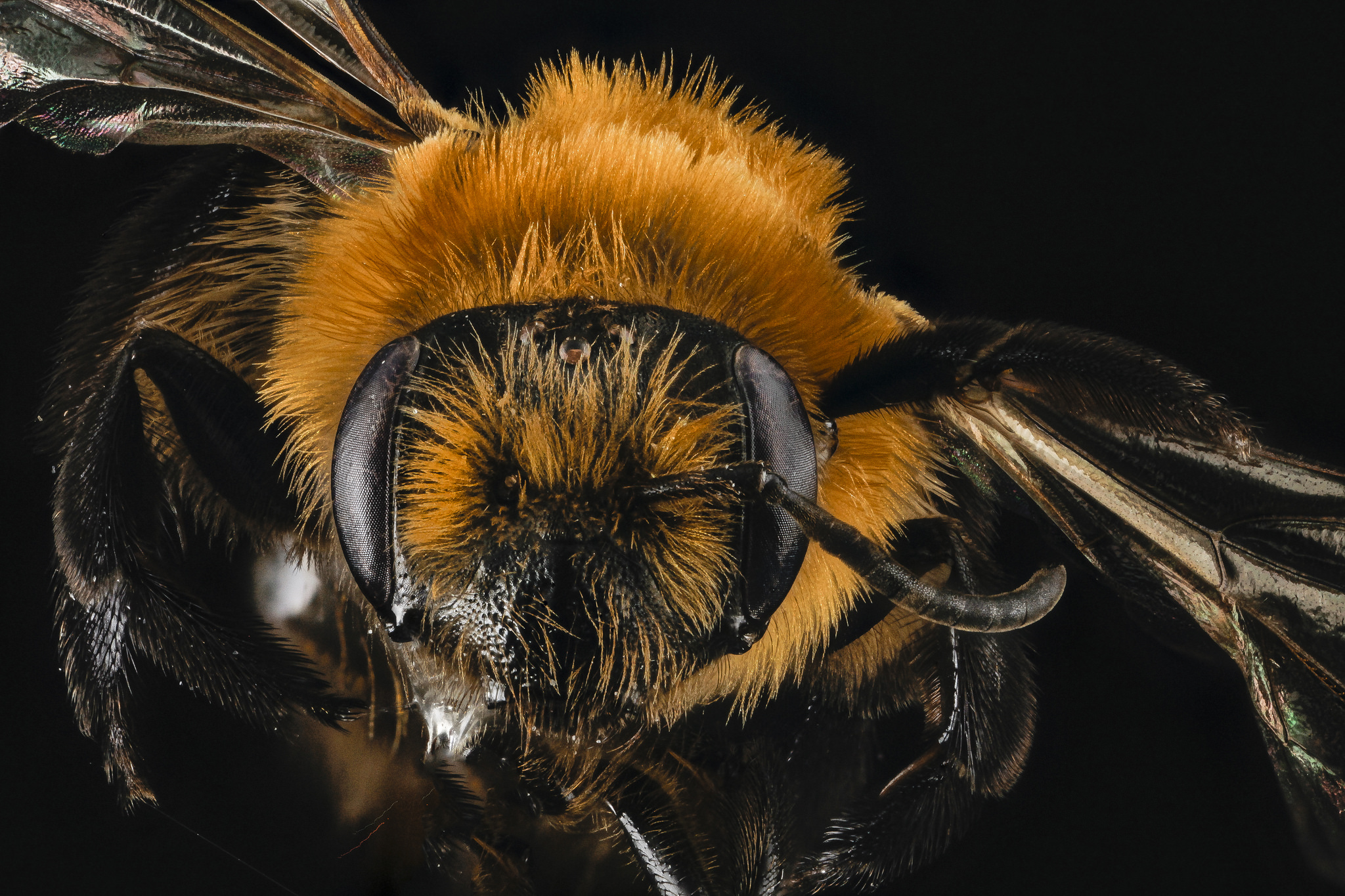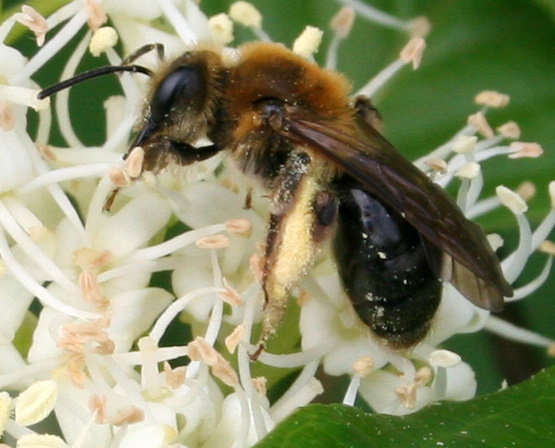Map Snapshot









13 Records
Description
A large dark Andrena. The lovely female, in fresh plumage, is relatively easy to identify simply by the orange brown color of its body hairs along with the nearly black hairs located on its hind legs which it uses to carry pollen to its nest. However, after it's been out in the sun for several weeks it can also turn the same off-white coloration that most of the other Andrena bees have in this group. (S. Droege, pers. comm.)
Relationships
"This is a bee of tree flowers. In particular, it favors Willows, but can be found on a wide variety of spring blooming woody plants, though seemingly avoiding the heath family, which has its own specialists." (S. Droege, pers. comm.)
Seasonality Snapshot
Source: Wikipedia
| Andrena dunningi | |
|---|---|

| |
| Scientific classification | |
| Domain: | Eukaryota |
| Kingdom: | Animalia |
| Phylum: | Arthropoda |
| Class: | Insecta |
| Order: | Hymenoptera |
| Family: | Andrenidae |
| Genus: | Andrena |
| Species: | A. dunningi
|
| Binomial name | |
| Andrena dunningi Cockerell, 1898
| |
Andrena dunningi, also known as Dunning's miner bee,[1] is a species of miner bee in the family Andrenidae. It is found in North America.[2][3]
References
[edit]- ^ "Standardized Common Names for Wild Species in Canada". National General Status Working Group. 2020.
- ^ "Andrena dunningi Report". Integrated Taxonomic Information System. Retrieved 2019-09-23.
- ^ "Andrena dunningi". GBIF. Retrieved 2019-09-23.
Further reading
[edit]- Ascher, J.S.; Pickering, J. (2019). "Discover Life bee species guide and world checklist (Hymenoptera: Apoidea: Anthophila)". Retrieved 2019-07-02.
- Michener, Charles D. (2007). The Bees of the World. Johns Hopkins University Press. ISBN 978-0801885730.



